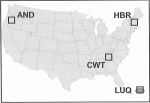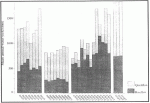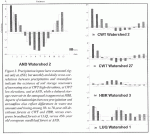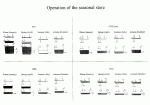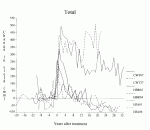Intersite comparison of long-term streamflow records from forested basins in Oregon, New Hampshire, North Carolina, and Puerto Rico
In this study, we examined the relationship between the streamflow hydrograph and precipitation inputs at interannual, annual, seasonal, and daily time scales in order to better understand how streamflow in undisturbed and harvested forested ecosystems is affected by varying sizes and timings of storages in soil and snow and losses from evapotranspiration.
The four LTER sites studied all have forest vegetation and mountainous topography, but they vary in climate and the age and type of forest vegetation. These differences produced quite different responses among the basins when forests were harvested. Comparison among control basins highlighted the different importances of soil and snow reservoirs as well as different roles of ET in controlling streamflow among the sites.
Comparison of post-harvest streamflow trajectories indicates that streamflow is strongly coupled to succession, while different successional pathways, forest types, and forest ages may produce quite different streamflow responses to forest harvest.
CONCLUSIONS AND FURTHER WORK
This comparative analysis of "black box" streamflow data raises many intriguing hypotheses about ecological controls on streamflow, including how the physical structure of the canopy affects interception, and how the species composition and water use behavior of various species interact with climate and soil moisture storage. In addition, different successional patterns may contribute to diverging post-harvest streamflow trajectories, while the different disturbance histories of the sites prior to forest harvest experiments also may have produced differences in their responses. These hypotheses deserve further process-level study at these LTER sites. In addition, ecological hydrology will benefit from expansion of this approach to analysis of streamflow records to other LTER or non-LTER sites.

 Enlarge this image
Enlarge this image